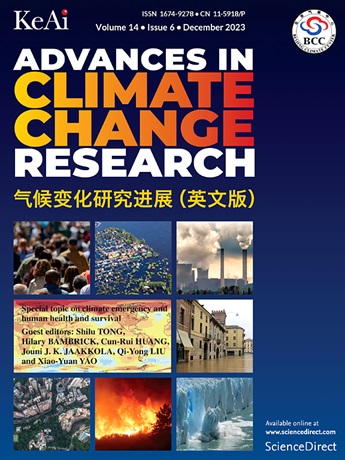中国多物种保护走廊:适应气候变化
IF 5.2
1区 地球科学
Q1 ENVIRONMENTAL SCIENCES
引用次数: 0
摘要
气候适应性迁移走廊的发展已成为生物多样性保护的一项关键战略。然而,现有的研究大多集中在少数物种的迁移模式和适应性上,很少关注气候变化下全国范围内多物种迁移通道的设计。本文以中国1023种国家级保护野生动物为研究对象,利用最大熵模型预测了它们在当前气候条件和SSP2-4.5情景下的潜在分布。以预测结果为基础,进行热点分析,确定生境选择率下降、稳定或增加的区域,并将其指定为生态源。这些区域对应于可能经历物种迁移、保留或迁移的区域。基于电路理论和最小累积阻力模型,利用Linkage Mapper工具构建了气候适应性保护廊道,并确定了关键生态节点。共鉴定出49个生态源,其中高通量下降的生态源19个,高通量稳定的生态源13个,高通量增加的生态源17个。这些高通量保护区覆盖了90%以上的研究物种,具有较强的保护代表性。我们还绘制了108条迁徙通道,其中49条支持高铁覆盖率下降地区的物种迁移,59条促进物种交流和连通性。此外,我们还确定了978个生态点和203个屏障点,这些点是未来走廊规划的关键优先事项。支持气候变化适应的多物种保护走廊设计新框架,为中国实现《昆明-蒙特利尔生物多样性框架》目标和改善生态系统连通性做出贡献。本文章由计算机程序翻译,如有差异,请以英文原文为准。
Multispecies conservation corridors in China: For climate change adaptation
The development of climate-adaptive migration corridors has emerged as a key strategy for biodiversity conservation. However, most existing studies focus on the migration patterns and adaptability of a few species and barely pay attention to the design of migration corridors that address multispecies needs at a national scale under climate change. In this study, we analysed 1023 nationally protected wildlife species in China to predict their potential distributions under current climatic conditions and the SSP2-4.5 scenario using the maximum entropy model. The projections were used as a base to conduct hotspot analysis to identify areas with declining, stable or increasing habitat selection rates (HSRs), which were designated as ecological sources. These areas correspond to regions likely to experience species emigration, retention or immigration. Using circuit theory and the minimum cumulative resistance model, we employed the Linkage Mapper tool to construct climate-resilient conservation corridors and identify critical ecological nodes. We identified 49 ecological sources, including 19 ecological sources with declining HSRs, 13 ecological sources with stable HSRs and 17 ecological sources with increasing HSRs. These HSRs collectively covered over 90% of the studied species and demonstrated a strong conservation representativeness. We also mapped 108 migration corridors, including 49 supporting species movement from areas with declining HSRs and 59 enhancing connectivity and species exchange. In addition, we identified 978 ecological pinch points and 203 barrier points, which are critical priorities for future corridor planning. A novel framework for the design of multispecies conservation corridors that support climate change adaptation, which contributes to China's efforts to achieve the Kunming–Montreal Biodiversity Framework targets and improve ecosystem connectivity.
求助全文
通过发布文献求助,成功后即可免费获取论文全文。
去求助
来源期刊

Advances in Climate Change Research
Earth and Planetary Sciences-Atmospheric Science
CiteScore
9.80
自引率
4.10%
发文量
424
审稿时长
107 days
期刊介绍:
Advances in Climate Change Research publishes scientific research and analyses on climate change and the interactions of climate change with society. This journal encompasses basic science and economic, social, and policy research, including studies on mitigation and adaptation to climate change.
Advances in Climate Change Research attempts to promote research in climate change and provide an impetus for the application of research achievements in numerous aspects, such as socioeconomic sustainable development, responses to the adaptation and mitigation of climate change, diplomatic negotiations of climate and environment policies, and the protection and exploitation of natural resources.
 求助内容:
求助内容: 应助结果提醒方式:
应助结果提醒方式:


